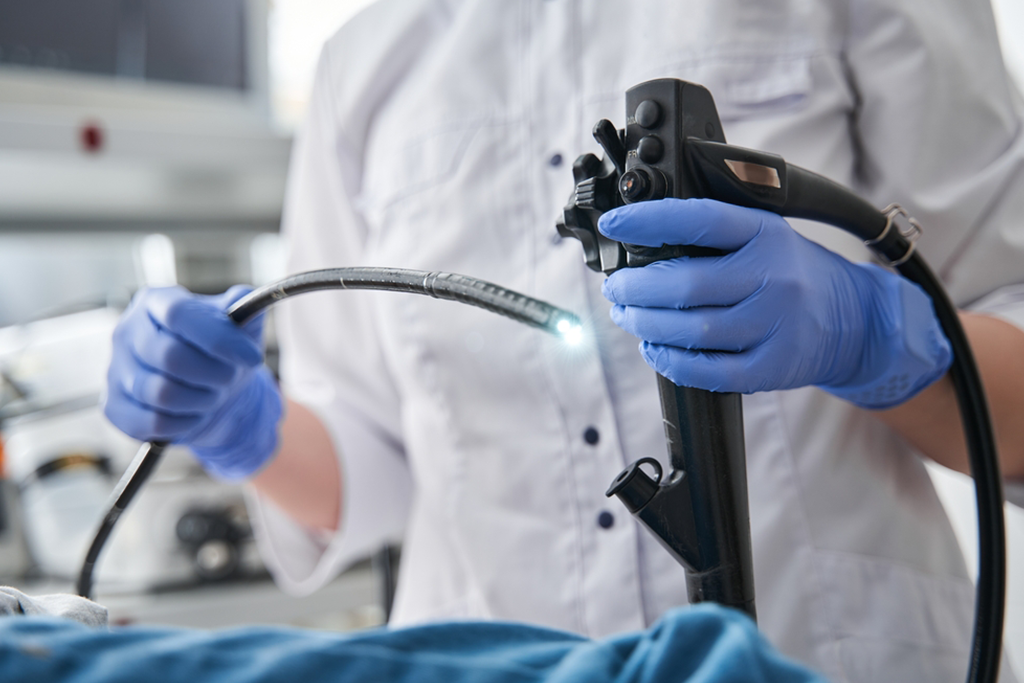Introduction
Endoscopy has revolutionized the field of gastroenterology, enabling minimally invasive diagnosis and treatment of digestive disorders. With continuous advancements, modern endoscopic procedures offer greater precision, reduced recovery time, and improved patient outcomes. In this blog, we explore how these innovations are transforming digestive health diagnosis.
What is Endoscopy?
Endoscopy is a minimally invasive procedure that uses a flexible tube with a camera and light to examine the digestive tract. It helps in detecting conditions such as GERD, ulcers, polyps, inflammatory bowel disease (IBD), and gastrointestinal cancers.
Types of Endoscopic Procedures
- Upper GI Endoscopy (EGD): Examines the esophagus, stomach, and duodenum.
- Colonoscopy: Screens for colorectal cancer and detects polyps.
- Endoscopic Ultrasound (EUS): Provides detailed imaging of digestive organs.
- Endoscopic Retrograde Cholangiopancreatography (ERCP): Diagnoses and treats bile duct and pancreatic disorders.
- Capsule Endoscopy: Uses a small camera pill to visualize the small intestine.
- Third Space Endoscopy: Includes advanced techniques like POEM (Peroral Endoscopic Myotomy) and ESD (Endoscopic Submucosal Dissection) for treating esophageal and gastric disorders.
Latest Advancements in Endoscopy
- High-Definition (HD) and 4K Endoscopy
Modern HD and 4K endoscopes provide superior image clarity, allowing for early detection of abnormalities such as precancerous lesions and polyps.
- Artificial Intelligence (AI) in Endoscopy
AI-assisted endoscopy enhances polyp detection, classification of lesions, and real-time decision-making, reducing the chances of misdiagnosis.
- Narrow Band Imaging (NBI)
NBI technology improves mucosal visualization, helping in early detection of gastrointestinal cancers without the need for dyes.
- Endoscopic Mucosal Resection (EMR) & Endoscopic Submucosal Dissection (ESD)
These minimally invasive techniques help remove precancerous and early-stage cancerous lesions without surgery, reducing hospital stays.
- Robotic-Assisted Endoscopy
Robotic-assisted systems provide greater precision and control, enabling safer and more effective procedures.
- Single-Use Endoscopes
With advancements in infection control, disposable endoscopes reduce the risk of cross-contamination, enhancing patient safety.
How These Advancements Benefit Patients?
- Early Detection of Diseases: Improves outcomes for conditions like colorectal cancer, Barrett’s esophagus, and gastric ulcers.
- Less Pain and Faster Recovery: Minimally invasive techniques reduce discomfort and speed up recovery.
- Lower Risk of Complications: Advanced technology reduces risks associated with traditional surgeries.
- Improved Accuracy: AI and high-definition imaging enhance diagnostic accuracy.
When to See a Gastroenterologist?
If you experience persistent digestive issues, such as acid reflux, bloating, abdominal pain, difficulty swallowing, or rectal bleeding, consult a gastroenterologist for an endoscopic evaluation.
Book an Appointment with Dr. Suryaprakash Bhandari
Dr. Suryaprakash Bhandari, a leading gastroenterologist at Gastrocare Clinic, Mulund, specializes in advanced endoscopic procedures for diagnosing and treating digestive disorders.
Gastrocare Clinic, Mulund
Call for appointments: 8655558789
Conclusion
Advancements in endoscopy have significantly transformed digestive health diagnosis and treatment. With the integration of AI, robotic assistance, and high-definition imaging, patients now benefit from safer, faster, and more accurate procedures. If you have persistent gastrointestinal symptoms, seek expert care for early diagnosis and treatment.


